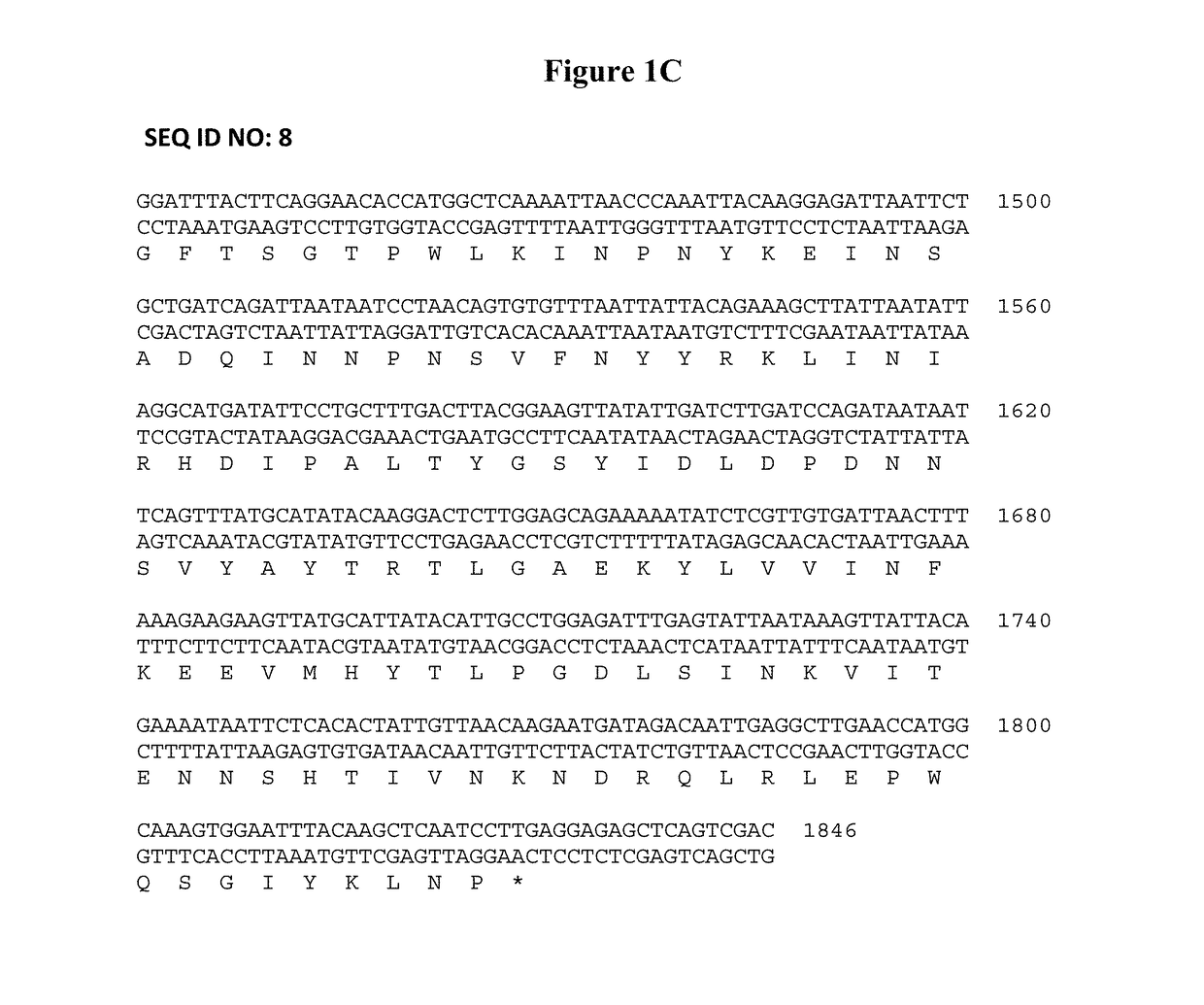Engineered plant biomass for biodiesel and bioethanol production
a technology of biodiesel and bioethanol, applied in the direction of enzymology, fuels, transferases, etc., can solve the problems of morphological abnormalities in plant development, and achieve the effects of increasing the pool of metabolites for ethanol fermentation, increasing the energy density of plant biomass, and enhancing sugar accumulation
- Summary
- Abstract
- Description
- Claims
- Application Information
AI Technical Summary
Benefits of technology
Problems solved by technology
Method used
Image
Examples
example 1
ion of Plant Transformation Expression Cassette
[0163]Expression constructs for SI were made in pUC57. The assembly of the expression vectors is depicted in FIG. 2. The pUC57 vector is known and available from Genscript (GenScript USA Inc. 120 Centennial Ave Piscataway, N.J. Catalog #SD1176-50 ug). In order to avoid high sugar concentration interference with plant development, the expression of the SI enzyme was targeted to vacuole. To achieve a higher level of sugar availability in green biomass a bacterial enzyme, SI, that converts sucrose into its storage isomer isomaltulose, has been expressed in tobacco under two different promoters (CaMV35S and Rubisco (RbcS)).
example 2
nsformation
[0164]Tobacco leaf explants (Nicotiana tabacum cv. Wisconsin) are used for Agrobacterium-mediated transformation (A. tumefaciens EHA105), selection and regeneration on MS-based media (Hiatt et al. (1989) Nature 342:76-78) according to the described protocols (Ko et al. (2000). Tobacco transgenic lines are generated by Agrobacterium-mediated plant transformation with a vector carrying, for example, SI. Independent transgenic lines were selected on MS medium containing kanamycin (100 microg / ml). Transgenic tobacco lines were later maintained in soil, and subsequent generations (T1 and T2) were obtained by self-Pollination.
[0165]The transgenic plants constitutively expressing, for example, SI may then cross-pollinated with the transgenic plants inducibly expressing, for example, an esterase, a thioesterase, lauryl-acyl carrier protein thioesterase, acyl CoA:diacylglycerol acyltransferase, Sn-2 acyltransferase in order to generate a transgenic plant comprising both genes.
example 3
Characterization of Transgenic Plants
[0166]PCR amplification of expressed genes may be performed with genomic DNA of each transgenic line using the same primers as described above. Fifty eight transgenic tobacco lines have been generated following genetic transformation with a vacuole-targeted SI gene under the control of CaMV 35S (33 lines) and Rubisco (25 lines) promoters. Twenty lines from each transformation (CaMV 35S-SI and Rubisco-SI) have been confirmed by PCR to contain the SI gene, examples of the PCR analysis are represented in FIG. 4, which shows PCR analysis of introduced SI gene in transformed tobacco. The best expressing lines have been selected for further growth and seed production.
PUM
| Property | Measurement | Unit |
|---|---|---|
| pH | aaaaa | aaaaa |
| sugar content | aaaaa | aaaaa |
| size | aaaaa | aaaaa |
Abstract
Description
Claims
Application Information
 Login to View More
Login to View More - R&D
- Intellectual Property
- Life Sciences
- Materials
- Tech Scout
- Unparalleled Data Quality
- Higher Quality Content
- 60% Fewer Hallucinations
Browse by: Latest US Patents, China's latest patents, Technical Efficacy Thesaurus, Application Domain, Technology Topic, Popular Technical Reports.
© 2025 PatSnap. All rights reserved.Legal|Privacy policy|Modern Slavery Act Transparency Statement|Sitemap|About US| Contact US: help@patsnap.com



